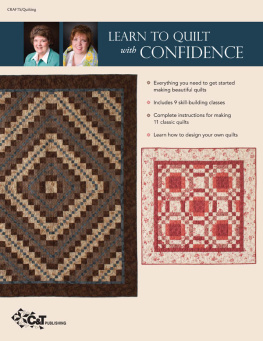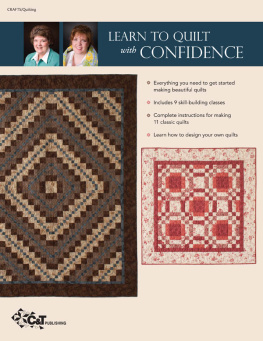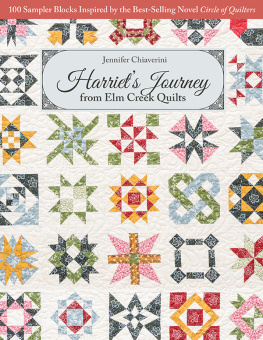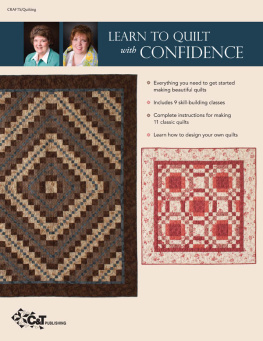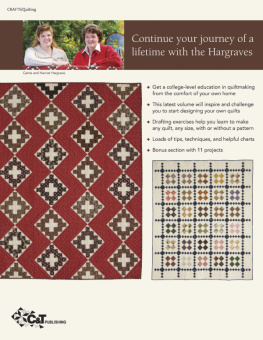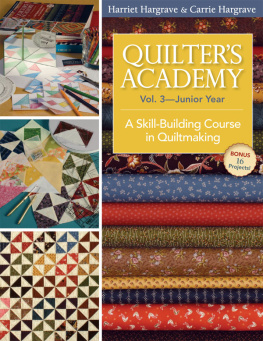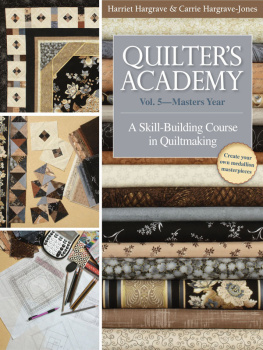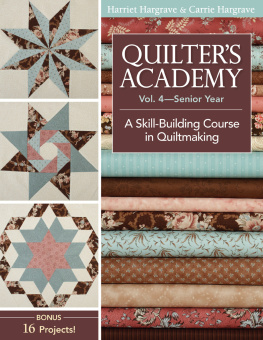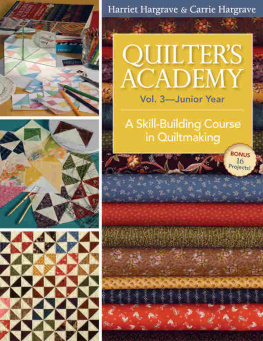About the authors
Harriet started quilting seriously in 1974, working alongside her mom. Her early quilting career included producing baby quilts for craft shows and teaching adult education classes. In 1981, Harriet opened her quilt shop, Harriets Treadle Arts. Her specialties at the time were free-motion embroidery, machine arts, and machine quilting.
In 1982, Harriet attended one of Mary Ellen Hopkinss seminars. Mary Ellens streamlined techniques and innovative design ideas led Harriet to a new way of thinking, which caused her to give up the machine arts and to teach only quilting. Today, she is world renowned for being a true mover and shaker in the quilt world. In the late 1990s, she was voted one of the 88 Leaders of the Quilt World.
Harriet created and inspired a whole new generation of machine quilters with her bestselling book Heirloom Machine Quilting, which has enjoyed 22 continuous years in print. She is also the author of Mastering Machine Appliqu and From Fiber to Fabric, and co-author of The Art of Classic Quiltmaking. She is responsible for a myriad of products pertaining to machine quilting, and she has developed batting with Hobbs Bonded Fibers and designed fabric for P&B Textiles.
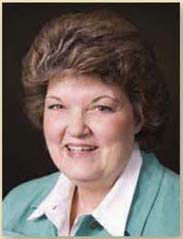
Carrie has been around quilting all her lifesitting in Harriets lap as a baby while Harriet sewed, learning her colors with machine embroidery thread and her alphabet on the cams of Harriets old Viking sewing machine. She didnt have a chance not to be involved! Harriet and her mother opened the store when Carrie was four years old, and she spent a part of nearly every day of her life at the store. Carries interests in college turned to range management and wildlife biology, but no matter what, she always came home to quilting as a hobby.
In 2006, Harriet decided she wanted to close the store. She was tired after running it for 25 years as well as traveling and teaching at the same time. Carrie couldnt imagine not having the store as a part of her life. So she moved back to Colorado and now runs the store full-time while finishing her masters thesis, The Physical Properties of Quilting Thread.
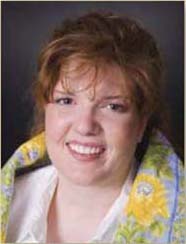
Most of all, Carrie is proud to carry on the family legacy of quilting that extends from her great-great-grandmother Phoebie Frazier, to her great-grandmother Harriet Carey, to her grandmother Harriet (Fran) Frazier, to her mom, Harriet. Quilting is all about tradition (no matter how you make a quilt) and about the love of creating something beautiful from fabric and thread with your own hands.
All the quilts in the book were pieced and quilted by Harriet and Carrie. They truly believe that if you are going to teach it, you had better be able to make it!
Class 110
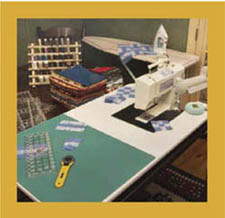
In this beginning class, were going to give you the basics you need to know to get started, from setting up a simple sewing area to collecting the basic tools. This is the very first step in your quiltmaking adventure. We know its dry stuff, but its really important!
how to use this book
Because our approach to teaching the skills of quiltmaking is different from what anyone else has yet done, there are two ways to use this book. If, like Harriet, you want all the meat and potatoeswhat to look for and do, how to set up everything before you start sewingyou can read ahead to get the more detailed information in this book. If, like Carrie, you want to get started making a quilt top and will gradually create a dedicated sewing, ironing, and cutting space as you need it, work your way through this book class by class, lesson by lesson. By the end, you will have a number of lovely quilt tops ready to quilt, and youll be well on your way to being a quilter!
LESSON ONE: Setting up a sewing area
If you are just starting out, this lesson will give you an idea of the bare minimum you need in terms of work space to be able to create the quilt tops that we will make in this book. It may be daunting to think about all the equipment needed to start quilting if you are just beginning. If you already have a sewing roomgreat! You are ready to jump in and begin. However, while having a dedicated sewing space is nice, be assured that it is not really necessary for making a quilt. Well show you how to set up a simple layout that will get you started. Well give you more details about ergonomics and space requirements when you get to .
SEWING MACHINE AREA
Piecing does not require an extensive work area like machine quilting does. The rough minimum sewing space you need for making a quilt top is about 3 feet by 4 feet, mostly to your left and behind your sewing machine. If your machine is on a tabletop instead of in a cabinet, you will need a good support system around the machine. If you are sewing on a dining room or kitchen table, the photo shows a great setup for a sewing machine. It is easily taken apart and put away when the space is needed for other things.
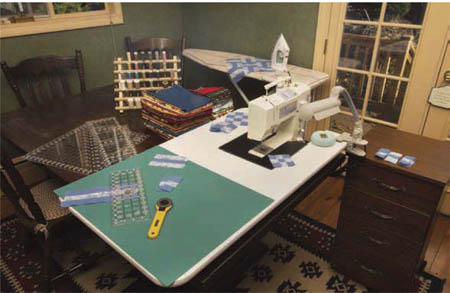
Setup of a basic sewing area
, you can buy one that is cut to fit your machine, like the Sew Steady Portable Sewing Table by Dream World (which comes in several sizes).
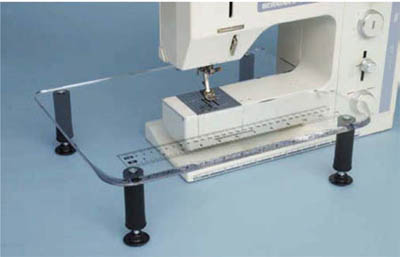
Sew Steady table
IRONING AREA
Your ironing board is a major workstation when you are piecing. Be sure that it is heavy, stable, and not warped. If yours has any of these issues, shop for a new one.
When ironing (even clothing), be aware that too much padding can lead to distortion. When you are piecing a quilt, inaccurate pressing of the pieces can ruin your project. A thin layer of 100% cotton batting (not more than inch thick) makes an ideal ironing pad under the ironing board cover. A gridded ironing board cover is helpful. If the cover is stretched onto the board tight and straight, the lines of the grid can be used as guides to keep strips straight when pressing. See ).
It can be difficult to handle larger pieces on an ironing board because of its shape. Its helpful to turn the ironing board around so you are working on the wider end.
tip
Avoid using a Teflon ironing board cover. The slippery surface makes it hard for the fabric pieces to get a grip and create resistance for the iron. Also, the fabric does not dry after you have steamed or starched it. Cotton is preferable because cotton sticks to cotton and absorbs moisture, and a cotton ironing board cover will keep the pieces from sliding when you are ironing seams. It also allows the pieces to dry quickly between steaming and starching.
CUTTING AREA
Kitchen or laundry room counters, or even the top of the clothes dryer, are good places to set up a makeshift cutting area. Just make sure its not too far from your sewing and ironing area.
Find a place thats at a comfortable height. If you are over 5 feet tall, about 36 inches is the best height. If you are under 5 feet tall, 32 inches or less will work for you. The main idea is that you do not want to lean over too much (ideally not at all) in order to be comfortable and to have the strength and power to cut the fabric cleanly and accurately. See ), for more information about ergonomics.

